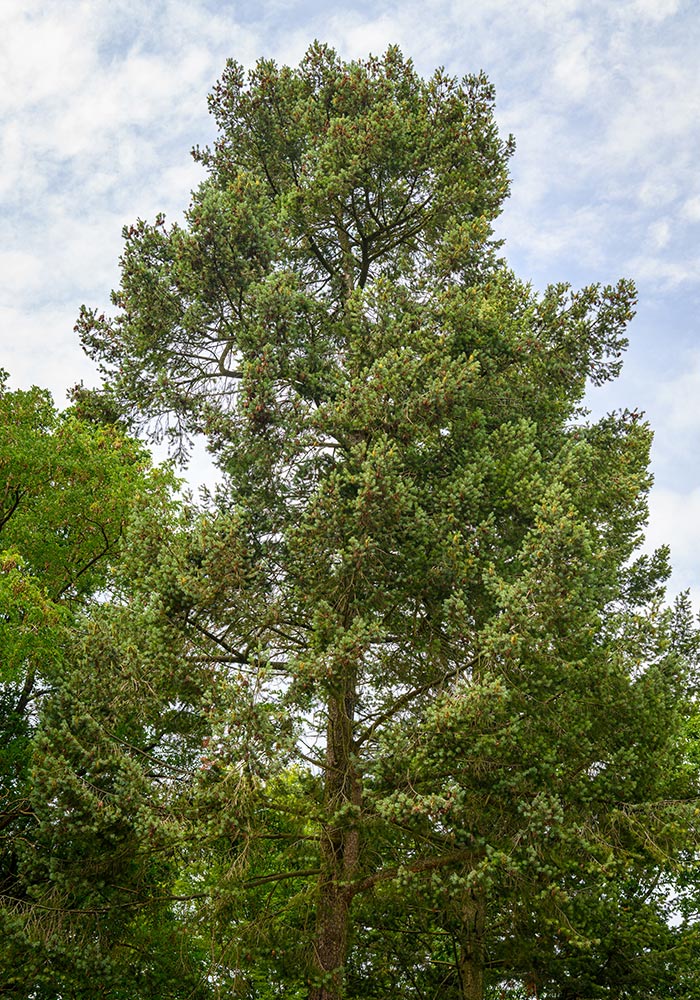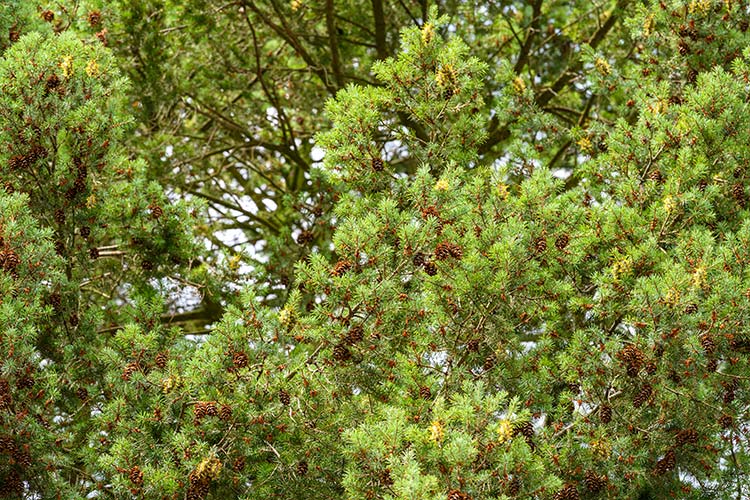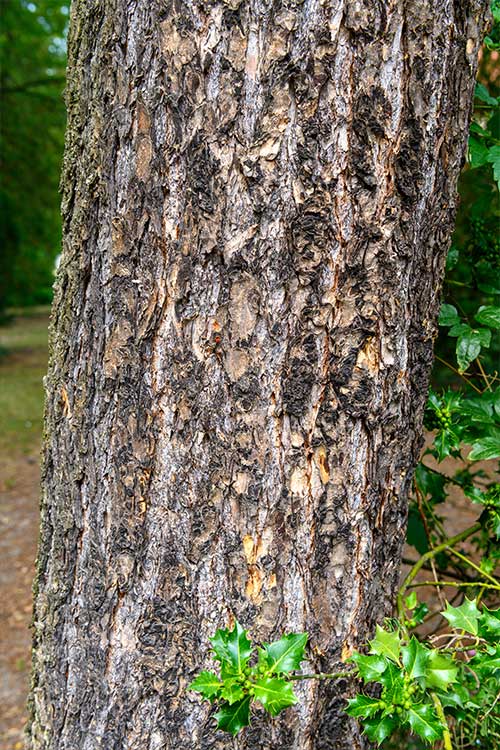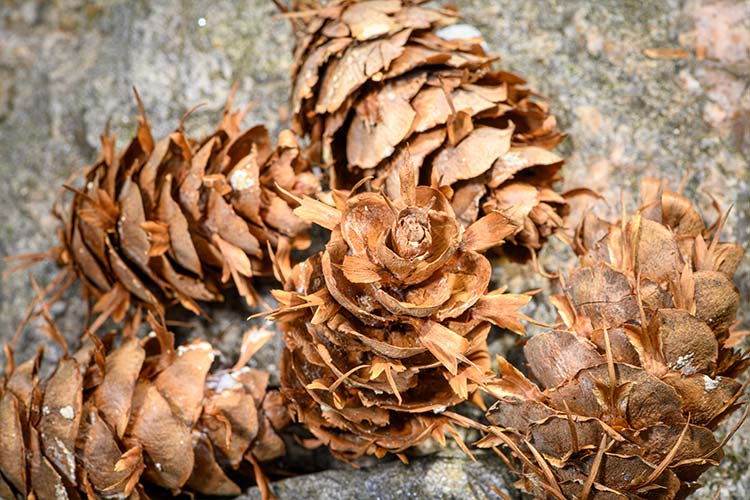3Douglas fir
Pseudotsuga menziesii variant 'Glauca'

The third tree on the tour is a Douglas fir, a towering tree with a straight trunk, blackish brown bark, and a relatively slender crown. It is also called Mountain Douglas fir, botanical name Pseudotsuga menziesii variant 'Glauca', and it belongs to the pine family or Pinaceae.
The name Douglas fir is derived from the Scottish botanist David Douglas (1799-1834), who described the common Douglas fir and introduced it to England. The botanical genus name Pseudotsuga is derived from the Greek word pseudos (meaning false) as well as from Tsuga (hemlock).
The Douglas fir is native to western North America. After it was introduced to Europe, it did so well here that it is now considered the most important non-native forest tree species. It is not surprising that it thrives so well here, considering that Douglas firs were also native to Europe until the last ice age.
Douglas firs are evergreen trees. They prefer sunny locations and thrive best on nutrient-rich soils that are not too stony. But they are are generally tolerant, except for areas of waterlogging or long periods of drought.



Douglas firs grow quite quickly to heights of up to 50 meters and widths of 12 meters. They are hardy and can live for many hundreds of years. The needles are blue-green with blunt tips. They have a citrusy smell when rubbed between the fingers.
The common Douglas fir is monoecious, which means that female and male reproductive organs are located on the same plant. The flowering period is between April and May; the male flowers are yellow, while the female ones are reddish brown. The cones, up to 10 cm long and 3 cm wide, develop through wind pollination. On the whole, they fall from the tree between September and October. Three-peaked appendages protrude from under the top scales of the Douglas fir cones. A folk tale from native North Americans offers an explanation for this. An old Douglas fir wanted to teach a lesson to cheeky mice that were stealing the seeds from its cones, so it collapsed the cones. The three-pronged appendages are the hind legs and tails of the captured mice, still sticking out of the cones.
Native North Americans also used the common Douglas fir as a medicine. The resin was chewed for coughs and sore throats, and tea brewed from the needles was drunk for colds. The resin was also used as a wound dressing, processed into ointment against sore muscles or rheumatism.